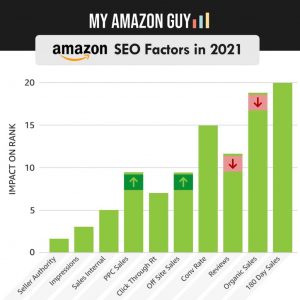You might be wondering, “Is it worth selling on Amazon?” The truth is, we can’t answer that question for you.
Only you can determine if Amazon is the right platform for your business, based on your goals, resources, and the nature of the products you want to sell. However, what we can do is help you make an informed decision by outlining both the benefits and drawbacks of selling on Amazon.
In this article, we’ll break down both the pros and cons of selling on Amazon, from its massive customer base to its high fees. By the end, you’ll have a clearer idea of whether Amazon is the right marketplace for your products.
Table of Contents
The Benefits of Selling on Amazon
Amazon is an incredible marketplace where countless sellers have built successful businesses. With its massive reach and powerful tools, it’s no wonder that so many entrepreneurs have turned to Amazon as their primary sales platform.
That said, selling on Amazon offers numerous advantages that make it an attractive option for both new and experienced sellers. Here are the key benefits of selling on Amazon:
1. Massive Customer Base
One of the biggest advantages of selling on Amazon is its massive customer base. With over 3.6 billion monthly visitors in November 2024, Amazon gives sellers unparalleled access to millions of potential customers worldwide.
Shoppers turn to Amazon as a trusted platform to find a wide variety of products, which means your listings are exposed to a ready-made audience. This built-in traffic offers sellers a unique opportunity to connect with new customers without needing to drive external traffic to their store.
2. Growth Tools at Your Fingertips
Selling on Amazon comes with a wealth of tools and resources designed to help you grow your business. Amazon Seller Central serves as the hub for managing these tools, making it easy to oversee operations, enhance customer experience, and increase sales.
Here are some of the key features that Amazon offers to support your growth:
Seller University
Seller University offers helpful resources to get you started or improve your Amazon business. You can access:
- Articles and videos for beginners and brand sellers
- FAQs to help you stay informed on Amazon policies and best practices
Amazon Brand Registry
For brand owners, Brand Registry protects your intellectual property and ensures your listings are secure. Key features include:
- Automated protections to prevent counterfeit products on Amazon
- The Impact dashboard to help you manage and resolve issues
- Access to Brand Registry support for policy violations and listing problems
Amazon Advertising
Advertising helps boost your product visibility and drive sales. You can use three types of pay-per-click ads:
- Sponsored Products to promote individual listings
- Sponsored Brands to increase brand awareness
- Sponsored Display to retarget potential customers
3. Convenience of Amazon FBA
As an Amazon seller, you can choose to be an FBA (Fulfillment by Amazon) seller. Amazon FBA simplifies the selling process by handling the logistics for you. From storing inventory in Amazon’s fulfillment centers to picking, packing, and shipping products, FBA takes care of the heavy lifting.
Additionally, FBA manages customer service, returns, and refunds, saving sellers time and effort. FBA sellers often gain priority for the Buy Box, increasing visibility and boosting sales potential.
4. Trust and Brand Authority
Selling on Amazon allows you to benefit from the trust and credibility that Amazon has built as a leading e-commerce platform. Customers are more likely to make a purchase on Amazon compared to lesser-known websites, even if they’ve never bought from your brand before.
Amazon’s excellent return policies, customer reviews, and seller ratings provide shoppers with the confidence they need to buy. Additionally, Amazon’s reputation for fast and reliable delivery further enhances consumer trust, making it easier for sellers to build credibility and secure sales.
5. International Expansion
Expanding your business internationally is much easier on Amazon than doing it on your own. As one of the most trusted e-commerce platforms worldwide, Amazon ships to over 100 countries and operates local sites in 13 countries, giving sellers access to a global audience.
Amazon simplifies the challenges of international selling by handling order fulfillment, localized customer support, and logistics, so you don’t have to navigate complex systems alone. With its global reach, you can quickly test the appeal of your products in new markets without the heavy lifting required to manage operations in multiple regions.
6. Visibility on Search Engines
Selling on Amazon doesn’t just boost your visibility within the platform; it can also improve your presence on search engines like Google. Amazon product pages often rank high in search results, meaning your listings can appear at the top of Google searches for relevant keywords.
By optimizing your product pages with the right keywords, you can tap into Amazon’s SEO advantages to attract even more customers. This dual visibility helps drive traffic to your listings, increasing the chances of reaching a broader audience beyond Amazon’s own marketplace.
7. User-Friendliness
Selling on Amazon is a plug-and-play e-commerce solution that’s simple to use, even for beginners. If you can type and upload photos, you can create a product listing and start selling within a few hours.
Amazon handles the technical side, including payment processing, shopping cart systems, and site management, so you don’t have to. This allows you to focus on perfecting your product listings and growing your business without worrying about complex e-commerce setups.
8. Access to Prime Members
Selling on Amazon gives you access to the platform’s millions of Prime members, a loyal and fast-growing customer base. As of 2021, Amazon had over 200 million Prime members, and this number continues to grow thanks to the convenience and fast shipping benefits that Prime offers.
Prime customers highly value the two-day or same-day delivery options, often making Prime eligibility a key factor in their purchasing decisions. By enrolling in programs like FBA or Seller-Fulfilled Prime, you can make your products eligible for Prime shipping, increasing your chances of attracting these high-value shoppers and boosting sales.
The Drawbacks of Selling on Amazon
While selling on Amazon offers significant advantages, it’s not without its challenges. Understanding these potential drawbacks is essential to determine if Amazon is the right fit for your goals.
Just like any platform, Amazon has limitations that could impact your profitability or growth. By evaluating these disadvantages alongside the benefits, you can make an informed decision about whether selling on Amazon is worth it for your business.
1. Product Sourcing Problems
For sellers looking to source their own products, the process can be challenging and time-consuming. From finding reliable manufacturers to negotiating prices and ensuring product quality, sourcing often requires significant effort and expertise.
Even after securing a supplier, sellers may face issues such as low-quality samples, delayed responses, or logistical hurdles when shipping products to Amazon’s warehouses. Without careful planning, these challenges can lead to costly mistakes, making product sourcing a daunting task for many new Amazon sellers.
2. Packaging and Shipping Issues
Choosing FBA can save sellers time, but it doesn’t eliminate all packaging problems. Some fragile items, like glass products, are mishandled, leading to damaged goods and negative customer reviews.
For sellers using FBM, the responsibility for packaging and shipping falls entirely on them. This can be expensive and time-consuming, and any mistakes in logistics or delays can harm customer satisfaction and damage a seller’s reputation.
3. Amazon Fees and Costs
The initial cost of selling on Amazon can be significant, as it involves expenses like sourcing products, branding, and creating quality listings. Additionally, sellers need to pay various Amazon fees, including referral fees, fulfillment fees, and storage fees.
Amazon also frequently increases its fees, which can eat into sellers’ profit margins. For example, sellers have faced rising fulfillment costs and additional charges like low inventory fees, making it crucial to monitor expenses carefully to remain profitable.
4. High Competition
While Amazon offers access to a massive customer base, it also comes with intense competition among sellers. Many businesses sell similar products, making it challenging to stand out and win the Buy Box, which determines who secures the sale.
On top of that, Amazon itself competes with third-party sellers by offering its own private-label products. These products are often prioritized in search results and recommendations, giving Amazon an additional edge over other sellers.
5. Brand Protection
Managing your brand on Amazon comes with unique challenges, including the risk of counterfeit products. Unauthorized sellers can list counterfeit versions of your product, often at lower prices, which can hurt your sales and tarnish your brand’s reputation.
Negative reviews from counterfeit purchases can also impact the credibility of your original product, further affecting customer trust. Without proper safeguards like Amazon Brand Registry, sellers may struggle to maintain control over their listings and protect their brand identity on the platform.
6. Challenges in Amazon Marketing
Marketing on Amazon can be time-consuming and tricky, requiring effort to attract shoppers in a competitive marketplace. Sellers need to work on things like Amazon PPC ads, writing clear product descriptions, and optimizing listings for searches to stand out.
Amazon PPC ads, like Sponsored Products, need careful planning to avoid overspending or missing out on visibility. Without a clear strategy, sellers may struggle to get their products noticed or manage their ad campaigns effectively.
7. Time Commitment
Many people believe that selling on Amazon is simple and provides passive income once you post your listing. However, that couldn’t be further from the truth, as selling successfully requires constant effort and management.
To thrive on Amazon, you need to handle tasks like monitoring inventory, managing customer reviews, and adjusting your listings to stay competitive. Additionally, keeping up with Amazon’s frequent changes, fees, and policies takes time, making it far from a set-it-and-forget-it platform.
8. Limited Control
When you sell on Amazon, you operate within the rules and policies set by the platform, which can change at any time. Amazon prioritizes keeping its customers happy, and if a seller’s account faces issues like negative reviews, the process to resolve them can be slow and frustrating.
Fees, including referral and FBA fees, are also controlled by Amazon and are subject to frequent increases. Sellers are often left with little choice but to absorb these costs or risk losing access to the platform, making it clear that Amazon holds most of the power in the relationship.
Weighing the Pros and Cons of Selling on Amazon
So, is selling on Amazon worth it? The answer depends on your business goals and whether you’re ready to go through both the benefits and challenges that come with using Amazon as your platform. With access to millions of customers and powerful tools like FBA, Amazon can be a great option for growing your business.
However, selling on Amazon also comes with its drawbacks, like increasing fees, high competition, and limited control over your business. By carefully weighing the pros and cons, you can determine if selling on Amazon is worth it for your unique situation.
Are you thinking about selling on Amazon or need help with your current store? Reach out to our Amazon agency, we are here to make the process easier and help you get results.






